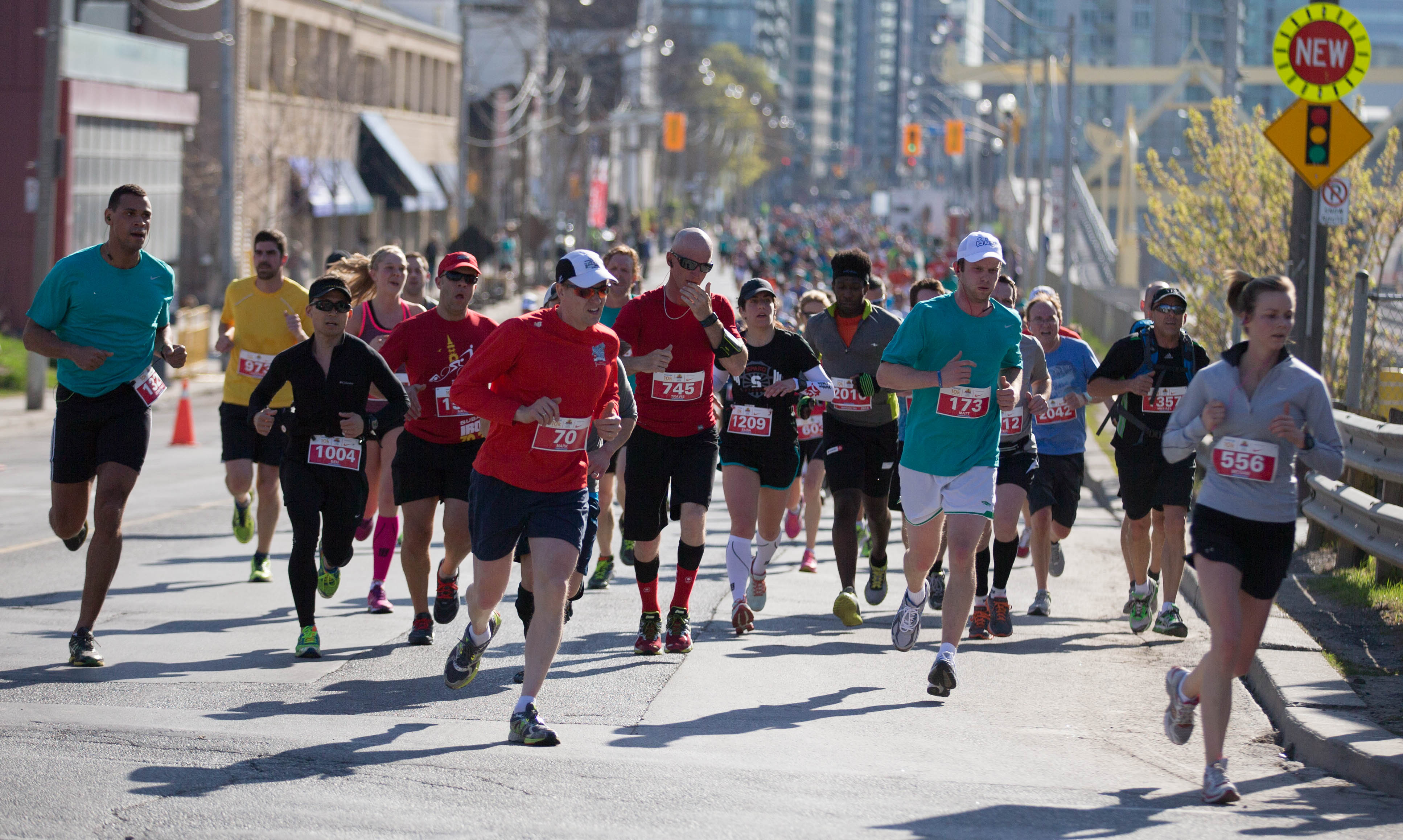Why downhill?

 In March of 2013, the Pike’s Peak Marathon filled in less than six hours. Considering that Chicago and New York fill up not in days or hours but sometimes minutes this shouldn’t be newsworthy. What makes this unique isn’t the relative obscurity of the race, as compared to huge events in Ottawa and Vancouver, but that the first 21-odd kilometres of the course are not merely uphill but up the side of a mountain.
In March of 2013, the Pike’s Peak Marathon filled in less than six hours. Considering that Chicago and New York fill up not in days or hours but sometimes minutes this shouldn’t be newsworthy. What makes this unique isn’t the relative obscurity of the race, as compared to huge events in Ottawa and Vancouver, but that the first 21-odd kilometres of the course are not merely uphill but up the side of a mountain.
That’s the easy part.
Those able to gut their way to the turn around face a 21K plummet to Colorado Springs. If a runner is going to get injured — and every year many athletes do — this is where it will happen.
Pike’s Peak isn’t a funny euphemism like Ontario’s Mount St. Louis, Blue Mountain or Georgian Peaks, but a rutted track carved out of the side of a Colorado mountain that levels out just north of 4,000m altitude. Pike’s Peak shouldn’t be popular.
And yet it is.
Every year athletes vie for the opportunity to throw themselves at what has to be one of the toughest marathons in North America. According to Susan Weeks, organizer of the race, Pike’s Peak 59-year history and singular challenge is a large part of the reason for its recurrent popularity
“Pikes Peak Marathon was ranked as a top-10 ‘bucket list’ race in a recent survey of endurance athletes by Active.com,” says Weeks.
Similarly, the Boston Marathon’s appeal isn’t just that athletes are required to qualify to compete but, at a deeper level, the myth is forged in the collective understanding that Boston hurts more.
Even Disney appears to have caught on, offering athletes not only the opportunity to run a half- and full-marathon in the same weekend but now also includes a 5K and 10K for people who felt that that running the “Goofy” or running a half- and full-marathon in two days wasn’t enough. It’s called the “Dopey.”
With the explosive popularity of standard-free events such as the Colour Run and the Tough Mudder, the heart of traditional distance running may be moving out of easy and attainable and into grim and harrowing. It wasn’t that long ago that running 42K was considered an extreme activity reserved for a select few.
This is clearly no longer the case.
Making sports easier isn’t anything new. Activities like golf, tennis and skiing have long been inclined to adapt equipment in order to make the ball easier to hit and the skis easier to turn, but there is a fine line between innovation and dumbing down the sport. One look at a Prince tennis racket or a Big Bertha golf club suggests that this line may have been crossed some time ago. In contrast, running has traditionally been impervious to these kinds of enhancements and, while shoes have gone through various incarnations from motion control to minimalist, modern running shoes do very little to improve speed or endurance.
If running gear has been resistant to paradigm shifting innovation, the same cannot be said for many races that appear intent on competing to be the flattest, fastest and most direct route to the Boston Marathon. Further out on the extreme end of the easy spectrum, live races that sell their wares not on the rewarding challenge or beauty of their course, but on the fact that a beach ball released at the start line has a decent chance of rolling to a personal best.
The recent Sporting Life 10K drew 27,000 runners, proving that a popular charity matched with an easy course is a large draw. However, it’s worth asking whether or not the running community needs another flat or downhill course?
The answer depends on who you ask.
Three years ago when the marathon world record was broken in Boston, the IAAF deemed that the course did not meet their standard because Boston is incongruously a net downhill. But no one who’s endured Boston would mistake it for being easy.
Some race directors believe there is a strong demand for a well-organized, high-end race. Despite Yonge Street’s downhill pedigree, the races there are always meet these standards. The number of athletes who step to the line in events like these speak at the very least to the high demand, but would they still be as eager if the race were run uphill?
Much of this depends on the reason people choose to race in the first place. Races can be as much about fundraising as anything else and there’s nothing wrong with that. Races can draw people more interested in renewing their fitness after a sedentary winter as well as those who want to compete. Mass participation in an athletic event is inherently good and everything from the city’s coffers to the charities to the athletes themselves benefit in innumerable ways.
But the numbers here may not tell the entire story and it’s possible that the race landscape is slowly changing. Running a marathon is no longer the defining achievement it once was, and increasing ultramarathon entries and growing interest in events like the Pike’s Peak Marathon or Leadville 100 suggest that distance runners may be ready for harder events.


